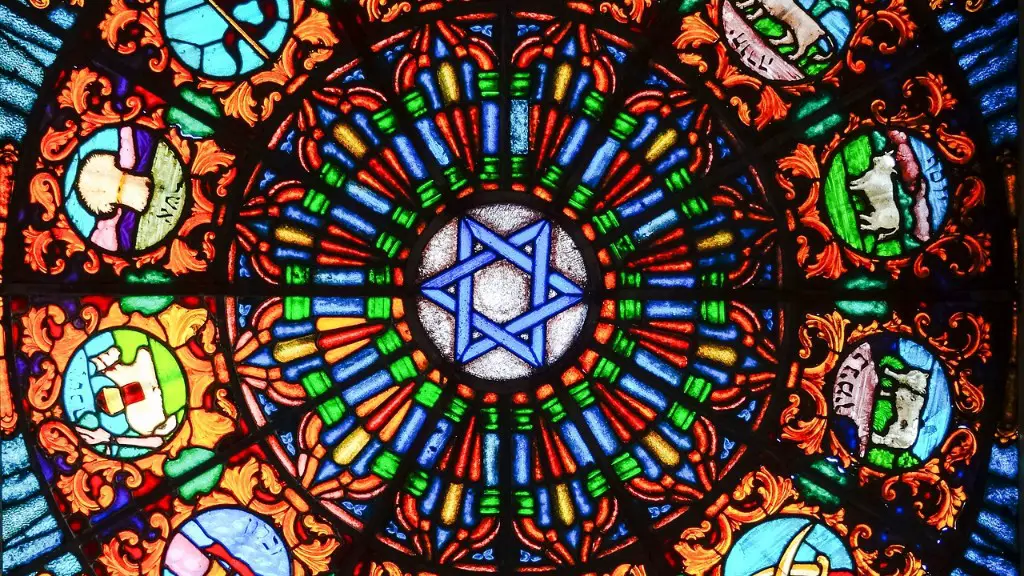Background
Judaism is a religion that is deeply rooted in the Old Testament and in customs that have been passed down through generations. The Day of Atonement, which is observed on the 10th day of the Jewish month of Tishrei, is one of the most important days in Judaism. The Day of Atonement is sometimes called Yom Kippur, from the Hebrew word for “Day of Atonement”. This day of prayer and fasting is an important religious observance for Jews all over the world. It is a day for prayer, reflection, and repentance for the sins of the past year.
On the Day of Atonement, Jews recite special prayers reflecting on the past year and asking for forgiveness from God. It is a time for reflection and introspection, and for making spiritual amends for the sins of the past year. At the same time, it is a day of physical sacrifice or fasting. During Yom Kippur, Jews are required to fast for a total of 25 hours, and refrain from work, leisure activities, and certain physical pleasures.
Traditional Meaning
According to Jewish tradition, the Day of Atonement marks the time when God forgives the sins of the Jewish people. It is believed that on this day, God’s mercy and compassion are boundless, and He grants complete forgiveness to all who repent and ask for mercy.
The Day of Atonement is a time for renewal and rebirth in the Jewish faith. It offers Jews the opportunity to reconnect with their faith and start fresh with a new beginning. It is a reminder for individuals to seek forgiveness and make amends for any wrongs they have committed. It is also a day for people to ask for forgiveness from those they have wronged.
Rituals and Traditions
The Day of Atonement is marked by fasting and prayer, but there are many other rituals associated with the holiday.
One traditional practice is called Koteret, or covering the face. On the Day of Atonement, Jews cover their eyes with a blanket or towel, to symbolize a plea for mercy from God. This practice is traditionally done three times during the day, at the three prayer services.
Another important ritual is the blowing of the shofar, or ram’s horn. The shofar is blown at the end of the morning service and again at the end of the afternoon service to symbolize the blowing of the Jubilee, or Biblical Year of Jubilee. The sounding of the shofar is thought to awaken souls to the idea of Divine mercy and atonement.
Additionally, on the Day of Atonement Jews observe the custom of Kaparot. Kaparot is a ritual in which one takes a chicken and swings it over one’s head three times while repenting for one’s sins. The chicken is then given to the poor, who eat it on the holiday.
Meaning and Significance
The Day of Atonement is an opportunity to reflect on one’s past mistakes and seek forgiveness. It is believed to be a time of spiritual rebirth and renewal, when the slate of one’s sins is wiped clean and a new beginning beckons. It is also a day of prayer and contemplation, when individuals come together to seek out divine mercy and compassion.
For Jews all over the world, the Day of Atonement is a reminder of the importance of forgiveness, mercy, and redemption. It is a day to reflect on the past and to strive for a better future. It is an important religious observance, and a powerful reminder of the importance of faith, forgiveness and repentance in our lives.
Modern Interpretation
In recent years, there has been increasing interest in the meaning of the Day of Atonement from more modern perspectives. For many, the holiday is no longer just a day of fasting and prayer, but a day to take stock of the past year and make resolutions for the following year.
It is also becoming increasingly popular among Jews to use technology as part of the observance of the Day of Atonement. For instance, modern groups like Repair the World have developed smartphone apps with prayers and study resources specifically tailored to Yom Kippur. This modern interpretation of the holiday reflects a desire to observe the holiday in a more engaging and meaningful way.
Accessibility Techniques
In the age of inclusivity and accessibility, more efforts are being made to ensure that everyone can participate in the observance of the Day of Atonement. For instance, some organizations host groups for Yom Kippur that are barrier-free, meaning that anyone with physical or mental disabilities can join in the celebration and observance of this important holiday. Additionally, many organizations offer a variety of resources for individuals who may want to observe the holiday in a more accessible way.
Educational Resources
In today’s world, learning about the traditions and practices associated with the Day of Atonement is easier than ever. With the advent of the internet, numerous educational resources have become available to teach and inform people about the history and observance of the Day of Atonement. These resources include websites, books, and educational lectures. They help to bridge gaps between generations and engage people of all ages in an exploration of the topics related to the observance of Yom Kippur.
Synagogues and Community Programs
Synagogues and community programs are also great resources for learning about the Day of Atonement. These organizations often provide community-based programs that bring together Jews of all backgrounds to observe the holiday and engage in conversations about its meaning and significance. Many of these programs are open to people of all faiths, providing an important opportunity for interfaith dialogue and exploration of the holiday.
Interfaith Activity
The Day of Atonement can be an important opportunity for healing and dialogue between people of different religious backgrounds. The holiday has become more universally recognized in recent years, and many organizations have begun to facilitate events in which people of all faiths can come together and learn about the holiday. These interfaith activities provide a powerful reminder that the Day of Atonement is a time for peace, forgiveness, and understanding.
Conclusion
The Day of Atonement is an important holiday in the Jewish faith and a powerful reminder of the importance of repentance and forgiveness. From traditional observances to modern interpretations, the holiday has been celebrated in a variety of ways, and there are numerous resources available to help people learn about the holiday and its significance. By coming together to observe the holiday, Jews of all backgrounds can find spiritual growth and renewal.

